Heinola 作者: 来源: 发布时间:2021-10-14
一、所属省或是州,具体位置,人口,面积
Heinola is a town in the province of Päijät-Häme, about 30 kilometers northeast of Lahti. The city is home to 18,661 people and covers an area of 839.28 square kilometers, of which 163.29 square kilometers are water bodies. The population density is 27.6 inhabitants / km². Heinola's neighboring municipalities are Asikkala, Hartola, Iitti, Kouvola, Lahti, Mäntyharju, Pertunmaa and Sysmä. Heinola has several wood processing plants, such as Stora Enso's board mill and Versowood, and used to house Reuma Hospital. It currently operates as the wellness and competence center Valolinna.
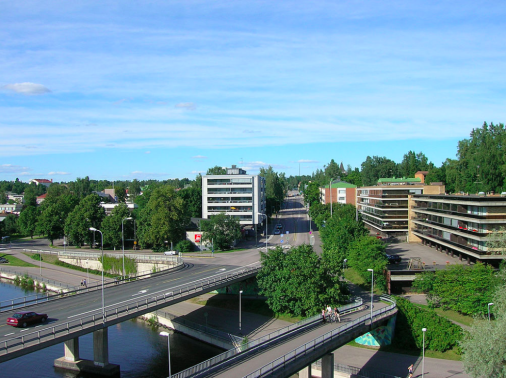
https://www.heinola.fi/laaninkivalteri-aschanin-talo
http://heinolanlintutarha.fi
https://www.heinola.fi/library/files/5ed8e517566ff8fd8c000802/Tilinp__t_s_2019.pdf
二、自然地理
1.地理条件
Heinola is largely situated between two lakes, Ruotsalainen and Konnivesi. A waterway connecting the lakes crosses the town and is, along with an esker also crossing the town, a characterising geographical feature of Heinola. A motorway (Finnish national road 4/E75) connects Heinola to Lahti(distance 35 km or 22 mi) and Helsinki (distance 138 km or 86 mi); it also acrosses Lake Ruotsalainen on the Tähtiniemi Bridge in the northern part of town. Heinola is also southern head of the Finnish national road 5, which goes over 900 kilometres to the north through the cities Kuopio and Kajaani to Sodankylä.
Heinola's water bodies include many lakes, the largest of which are Ruotsalainen and Konnivesi. They belong to the Kymijoki watershed. The center of Heinola is located along the Jyrängönvirta of the Kymijoki River between Swedish and Konnivesi. There is a connection from Swedish to Päijänne. In addition to the lakes, the natural landscape of Heinola is dominated by coniferous and mixed forests.
At the end of 2017, Heinola had 19,128 inhabitants, of whom 17,166 lived in urban areas, 1,762 in sparsely populated areas and the coordinates of the place of residence of 200 inhabitants were unknown. The degree of agglomeration is calculated for those residents whose coordinates of residence are known; Heinola's agglomeration rate is 90.7%. [9] The population of the agglomeration of Heinola is divided between three different agglomerations
https://www.heinola.fi/laaninkivalteri-aschanin-talo
http://heinolanlintutarha.fi
https://www.heinola.fi/library/files/5ed8e517566ff8fd8c000802/Tilinp__t_s_2019.pdf
2.交通情况
Heinola is located along Highway 4 from Helsinki through Lahti and Jyväskylä to Lapland. The section of the road from Helsinki to Heinola has been built as a motorway, and it runs west along the city center along Finland's second longest bridge, the Tähtiniemi Bridge. The motorway section from Lahti to Heinola was completed at the end of 2005. Highways 4 and 5 diverge north of Heinola city center at the Lus junction.
Heinola and Pohjois-Kymenlaakso are connected by main road 46, which runs from the church village of Heinola to the center of Kouvola, passing Jaala, Kuusankoski and Valkeala. When leaving Heinola, the road is in really bad condition up to the Kouvola border and its renovation project has been discussed by the City Council on several occasions.
Since July 2014, Heinola's local traffic has been operated by Lehtimäki Traffic, which has won the tender of the Lahti Region Transport Consortium. In Heinola, LSL's 8x series lines operate, mainly to Lahti, but also within Heinola to the largest districts and agglomerations, such as Sinilähte, Jyränkö, Tommola, Vierumäki and the church village.
Several dozen express shifts a day pass through Heinola. All express services between Helsinki and Mikkeli, Jyväskylä, Kuopio, Oulu, Kajaani and Rovaniemi, and between Kotka and Jyväskylä. In addition to the bus station, the Vierumäki junction, Tähtiniemi junction, Kaivokatu, Veljeskylä, Lusi junction and Paason and, most recently, Pääsinniemi (Vahteristo) express bus stops are located in the city area. At the intersection of Lus, the fast services between Heinola and Jyväskylä stop, but not between Heinola and Mikkeli. The express stop next to the gas station in Kirkonkylä was closed in 2012.
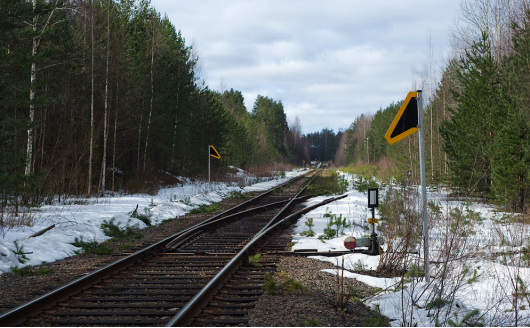
The railway from Lahti to Heinola was completed in 1932. There is a large railway bridge over the Jyrängönvirta in the city center. Today, there is only freight traffic on the track, as passenger traffic was discontinued in 1968. The nearest railway station serving passenger traffic is located in Lahti. Already during the construction phase of the Heinola line, it was planned to continue it later until the Savo line (the so-called HELEMI line), to which it would have joined on Mäntyharju or according to later plans in Mikkeli. The railway plan has been launched several times later, as it would significantly shorten travel times from Savo to Helsinki. HELEMI's policy has long been marked in the provincial plan of Etelä-Savo.
The extension of the current Lahti straight line to Jyväskylä has made headlines in recent years due to speed restrictions caused by the meandering and deterioration of the current Tampere – Jyväskylä line section. One of the options presented in the joint report of the provincial associations would run from the east of Päijänne via Heinola and Hartola to Muurame, where it would join the current line. The Päijät-Häme Regional Association has also carried out a study on the preconditions for commuter train traffic between Lahti and Heinola.
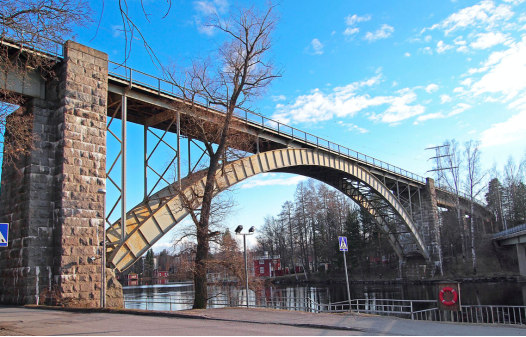
During the summer, there is also a water transport connection between Lahti and Heinola, which passes through the Swedish, Päijänne and Vesijärvi and the Kalkkinen and Vääksy canals connecting them. There is also water traffic between Heinola and Jyväskylä in summer. Plans have been planned to build a pleasure boat and water bus canal in Jaala Kimola for a long time, which would open the waterway between Heinola and Kuusankoski.
The public is visibly discussing the settlement of Heinola detached houses in agglomerations located closer to the motorway than the bus station. In addition, significant retail units have been added to Heinola's motorway junctions to serve, among other things, the settlement in the surrounding area.
https://www.heinola.fi/laaninkivalteri-aschanin-talo
http://heinolanlintutarha.fi
https://www.heinola.fi/library/files/5ed8e517566ff8fd8c000802/Tilinp__t_s_2019.pdf
三、经济发展和规模
After World War II Heinola has been economically an industrial town, mainly due to its wood processing industry. Industry remained the largest source of employment until the 1970s, when the trade and services sector grew larger, following a national trend. Heinola has been hit hard by Late-2000s recession. UPM-Kymmene, that used to be the largest employer after the public sector, reported closing down its sawmill and plywood mill in Heinola during 2010.
The city of Heinola's vitality industry is involved in several work and business-related projects, either as the main contractor or as a subcontractor. The green village of green growth is a cooperation project implemented by the City of Heinola, Lahti University of Applied Sciences and LUT University, the main goal of which is to increase the profitability and mutual cooperation of agricultural companies and develop new bioeconomy business opportunities in the Heinola region and Päijät-Häme.
https://www.heinola.fi/laaninkivalteri-aschanin-talo
http://heinolanlintutarha.fi
https://www.heinola.fi/library/files/5ed8e517566ff8fd8c000802/Tilinp__t_s_2019.pdf
四、产业特点/重点项目
A special focus is on the further processing of field biomass and the construction of a sustainable value chain and ecosystem, a biovillage, in Heinola around the large refinery investment sought. The aim is to find out how straw-based Bioprocessing can be made profitable in Päijät-Häme and under what boundary conditions. At the same time, the aim is to make the supply chain and process operational in Finland for the first time.
Other raw materials and by-products that complement the whole are considered alongside straw. This enables a more sustainable and commercially viable circular economy value chain than one process chain. At the same time, the benefits of primary production are increasing, such as recycled fertilizers, efficient logistics and new earning logics made possible by crops and their by-products. Another important goal is to assess the sustainability of organic products and to identify measures to promote sustainability. This will ensure the greatest possible positive effects from a climate change mitigation perspective.
https://www.heinola.fi/laaninkivalteri-aschanin-talo
http://heinolanlintutarha.fi
https://www.heinola.fi/library/files/5ed8e517566ff8fd8c000802/Tilinp__t_s_2019.pdf
五、风景名胜,景点( attractions)
1. Heinola Bird Garden
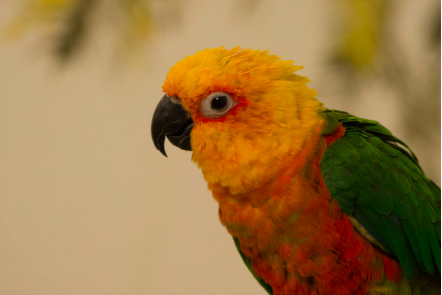
Heinola Bird Garden is a bird nursery that has cared for injured wild birds since 1963. Every year, about 200-250 birds are treated, of which 30-40% can be returned to the wild. Those who cannot be released for one reason or another will remain in the shelter to live. In addition to domestic birds, the parlor offers a variety of parrots that come to the aviary due to various hardships. Birds are delivered to the bird farm for treatment from all over Finland. The majority of injuries are due to man-made activities. Traffic is the biggest cause of accidents, as are power lines and various glass buildings that birds collide with. Some of the injured birds can be cared for in such a good condition that they can be released back into freedom, the worst birds will have to be killed, but those who manage independently in the shelter will stay in the orphanage.
The city of Heinola maintains a bird farm and has developed over the years into Heinola's most popular tourist destination. Approximately 100,000-120,000 guests visit the shelter every year. Among other things, kindergartens and school groups are active visitors to the Bird Garden and several children get their first contact with nature at the shelter. The bird sanctuary is of great educational importance for young people and also for other guests interested in nature.
The season starts in May and continues until the end of August. During that time, the majority of the birds can be seen in the outdoor gardens. Rehabilitating birds are not visible, but are allowed to recover in peace in the shelter’s care facilities before their release. Even in winter, there is plenty to see, as cold-tolerant species are outside and you can get to know the life of parrots in the winter garden.
https://www.heinola.fi/laaninkivalteri-aschanin-talo
http://heinolanlintutarha.fi
https://www.heinola.fi/library/files/5ed8e517566ff8fd8c000802/Tilinp__t_s_2019.pdf
2.Heinola City Museum
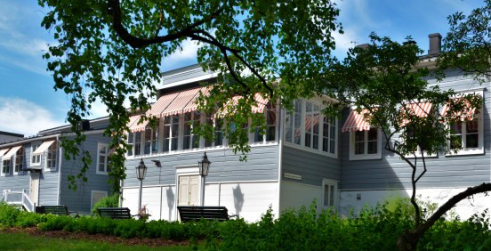
The museum is housed in the late 18th-century house of the merchant Ulrik Lindholm (1825–90). Lindholm created a property for himself, which included e.g. distillery and several shops. In his will, he ordered all his property for social purposes, as well as the current museum building for the city of Heinola, which soon turned it into a town hall. The Heinola City Museum has been operating in the building since 1984. Efforts have been made to restore its original appearance as far as possible, e.g. by bringing out wide floorboards, building walls in their original places, and closing window and door openings made later. The ceiling painting of the changing exhibition hall is painted according to the original model.
With the “Made in Heinola” exhibition tour, visitors can get to know the city's cultural heritage in a variety of ways. In the presentation of the contents, as much emphasis has been placed on objects made in Heinola or used by the people of Heinola. What is new in the exhibition is, among other things, the scale model of the city of Heinola, which has been updated to meet the needs of today's users. Many of the objects have belonged to interesting local people, such as the first inhabitants of the region, the future President of the Republic P. E. Svinhufvud or the band Apulanta, which made their breakthrough in the early 1990s. In the exhibition you can also explore pictorial treasures from the museum's own collections.
Originally home to the merchant Ulrik Lindholm (1825–90) and later the City Hall (1898–83), the building, now classified as culturally and historically valuable, has experienced and seen many stages over the decades. When the current town hall was completed, the building was renovated into a museum. The house was opened as a city museum in 1984. The building technology was thoroughly renovated in a renovation carried out in 2018–19. Efforts were made to restore the original spirit of the building, where possible, by, among other things, opening doorways and renovating the floors. The porch was also remodeled.
https://www.heinola.fi/laaninkivalteri-aschanin-talo
http://heinolanlintutarha.fi
https://www.heinola.fi/library/files/5ed8e517566ff8fd8c000802/Tilinp__t_s_2019.pdf
3. County Governor Aschan's House
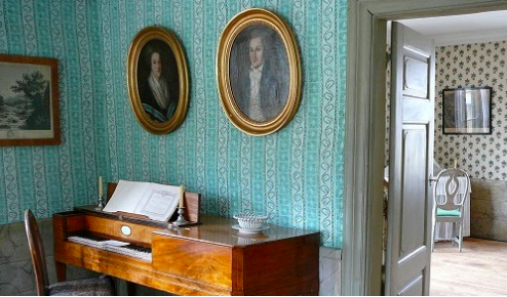
Already from the gate you step back 200 years into the yard and garden of the house. It was drawn up in the late 18th century. Every summer, useful and ornamental plants of that time are grown there. Inside, the furniture, wallpaper and utensils, doors and windows of the Gustavian period, tell the story of Heinola from the time of the governor and take the visitor to a unique atmosphere. The house represents Rococo and Gustavian in style and was completed in the 1780s as the home of the family of Lars Adolf Aschan (1741 - 1809), county chief (= police chief) of Kymenkartano county. The look of the building today is a combination of the original model mansard roof and the facade renovated in the 1840s. The interior has been preserved almost entirely in 18th-century appearance, with the exception of the kitchen and hallways.
Rooms feature Gustavian Wallpaper and marbled chest panels. The doors are of the three-mirror Rococo type, the ceilings and floors are original. Lääninkivalter's House is a rare preserved 18th-century town house in Finland. It has been able to be restored almost completely to its original appearance. We make wellness products and organic cosmetics that pamper the body and mind from Kivalter's garden: skin cream from calendula flowers and a fragrant detergent from marsh herbs. At the same time, we are learning about the plant health-promoting effects. Guided by Yikkti-Jyrki, a collection product consultant and natural resource producer from Asikkala.
The finished product can be redeemed with you to take home at cost price. In the event of rain, the workshop will move forward a week. Tickets to Kivalter House: adults 5 euros, museum card, children under 18 free. There is no separate participation fee for the workshop.
https://www.heinola.fi/laaninkivalteri-aschanin-talo
http://heinolanlintutarha.fi
https://www.heinola.fi/library/files/5ed8e517566ff8fd8c000802/Tilinp__t_s_2019.pdf
六、历史文化
1.历史
Heinola was founded in 1776 as the residence or residence of the governor of Kymenkartano county. Heinola was the center of Kymenkartano county. It was granted city rights in 1839 after the governor moved to Mikkeli. Heinola belonged to Mikkeli County until the 1997 county division reform, and in 1997–2009 it belonged to the Province of Southern Finland. The countryside of Heinola and the city of Heinola merged at the beginning of 1997. The church village of the former Heinola countryside is still called the church village of Heinola.
Heinola used to be a remote village of then larger Hollola until it gained significance in 1776 when Gustav III of Sweden promoted it to be the governmental center of the province in which it was then located. The grid plan of the city center is from that era. Heinola also became a center of commerce for nearby regions.
When Finland became a part of Russia in 1809, the capital of the province was moved eastwards with the state border. To compensate this, Heinola gained a city status in 1839. Before World War II, Heinola was widely known as a spa town, and until 1972 it served as a location for an institute (seminaari) that taught elementary school teachers. These both were established in the 1890s and played an important role in the town life. Heinolan maalaiskunta was merged into Heinola in 1997.
https://www.heinola.fi/laaninkivalteri-aschanin-talo
http://heinolanlintutarha.fi
https://www.heinola.fi/library/files/5ed8e517566ff8fd8c000802/Tilinp__t_s_2019.pdf
2. 文化体育
There are several primary schools in Heinola (Jyrängö School, Kailaan School, Kirkonkylä School, Lusi School, Myllyoja School and Vierumäki School), Lyseonmäki Secondary School, Heinola High School and the Salpaus Education Center, which has several vocational training lines. Vocational and polytechnic training in the field of sports is offered by the Finnish Sports College in Vierumäki.
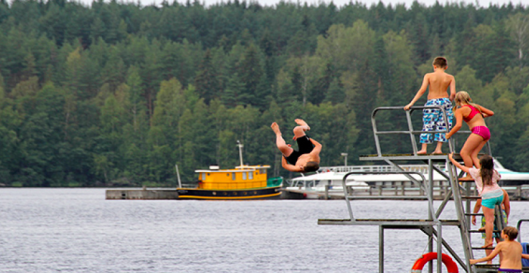
Heinola offers good conditions for exercise and sports. Heinola's Sports Services maintains and develops the city's sports facilities and conditions. Heinola's wide range of sports and exercise activities are organized by sports clubs, and they are assisted and supported by the Sports Services. The Sports Services organizes guided exercise groups for specific groups, for the elderly and for people of working age. Residents of Heinola who are 70 years of age or older may use the swimming hall and the city's gyms and take part in guided exercise groups for the elderly for free. Heinola, a city of healthy exercise, actively enforces health-promoting physical activity and exercise counselling. The swimming hall, ice stadium, bowling alley, sports hall, school gyms, sports fields in different neighbourhoods, beaches, tennis courts, shooting ranges, motor racing tracks and various outdoor trails are all intended for physical activity.
七、其他信息
The three villages of Heinola have received the honorary mention of the village of Päijät-Häme of the Year: Vierumäki in 2011, Lusi 2009 and Heinola Church Village in 2005, the latter of which was also awarded as the national village of the year. In the 1980s, Heinola's parish dishes were killed soup and pancake. Heinola is strongly featured especially in the detective stories of the Isaksson series, written by Markus Ahonen.
八、联系方式
Town manager: Jari Parkkonen
Phone: (03) 849 30
Email: etunimi.sukunimi@heinola.fi
Address: YHTEYSTIEDOT Rauhankatu 3 18100 HEINOLA
https://www.heinola.fi/laaninkivalteri-aschanin-talo
http://heinolanlintutarha.fi
https://www.heinola.fi/library/files/5ed8e517566ff8fd8c000802/Tilinp__t_s_2019.pdf
